Intentar ORO - Gratis
Start Your Own Hydroponic Garden
The Home Handyman
|March/April 2021
Not only is hydroponic farming the healthier option, but it also uses fewer resources and produces higher yields. But what is hydroponic gardening? It is a way of growing plants without soil where the crops grow directly in nutrient-rich water. It allows producers to provide food anyplace in the world, at any season of the year, and to net higher output with fewer resources, and it requires less space than conventional farming.

This method has a futuristic quality about it, but you might be surprised to learn the practice stretches back centuries. Some theorise that around 600 BC, the Hanging Gardens of Babylon were established with hydroponic methods. Historians can conclude with more certainty that the Aztecs used a style of hydroponic farming in the 10th and 11th centuries when they began to farm on Lake Tenochtitlan.
Today, hydroponic cultivation has given rise to some of the world’s best cannabis. The increasing popularity of cannabis cultivation has massively contributed to advancements in hydroponic systems and nutrient formulation, and it continues to help write the modern history of hydroponics. But what more is there to know about this age-old technique embraced by farmers worldwide?
Hydroponics is a loosely defined term; there are many different unique systems that can be classified as hydroponics. The common denominator all hydroponic systems share is that they are soilless systems that provide three main ingredients: nutrients, oxygen, and water.
Deep water culture (DWC) is the most basic of all hydroponic systems. This system is good for beginners as it is very cost effective and easy to run. The idea is simple. Plants are put in separate containers and each is placed in a grow tray that is suspended in water. Alternatively, companies such as Pioneer Plastics have created ready-to-use kits.
In the DWC setup, the water tank has an air pump to keep the water oxygenated, and nutrients are then added to the water to feed the plant via the roots. The roots can stay submerged and still receive oxygen thanks to oxygenating air pumps.
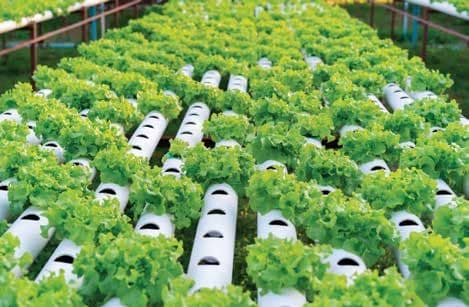
Esta historia es de la edición March/April 2021 de The Home Handyman.
Suscríbete a Magzter GOLD para acceder a miles de historias premium seleccionadas y a más de 9000 revistas y periódicos.
¿Ya eres suscriptor? Iniciar sesión
MÁS HISTORIAS DE The Home Handyman

The Home Handyman
KEEP YOUR HOUSE CRITTER FREE
With winter fast approaching, outdoor critters seeking to regulate their temperature are trying their best to get inside. Ants, spiders, moths, mosquitoes, fruit flies, stink bugs, termites, silverfish, and ladybugs, to name a few, can easily make their way into homes, and once they've settled in, it's often hard to get them out.
6 mins
Jul/Aug'25

The Home Handyman
SECRET HIDEOUTS
We all have things we would prefer to keep out of plain sight - family heirlooms, wedding rings, expensive jewellery, medicines or even weapons. Sometimes we just want to keep household items hidden in order to declutter a space. Whether you want to hide items for safety or financial reasons, or simply want to keep your bedroom tidy, there are a few clever storage ideas that could help you out.
2 mins
Jul/Aug'25
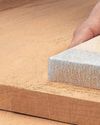
The Home Handyman
ABRASIVES DEMYSTIFIED
Abrasive materials are indispensable in countless industries, from woodworking and metal fabrication to automotive repair and electronics manufacturing.
3 mins
Jul/Aug'25
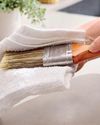
The Home Handyman
THINNERS VS. TURPENTINE
If you've ever finished a painting or staining job and been left wondering how best to clean your brushes, you're not alone. One of the most common DIY questions is: Should I use thinners or turpentine to clean my brushes? The answer depends on the type of paint or coating you've used. Using the wrong solvent can damage your brushes, or worse, make the cleaning job even harder.
2 mins
Jul/Aug'25

The Home Handyman
KEEP THE COLD OUT
Did you know that homes in South Africa are either insulated to a poor standard, compared to European nations, or have no form of insulation at all. In 2011 our National Building Regulations made it compulsory to fit thermal insulation in new buildings and additions to building structures.
5 mins
Jul/Aug'25
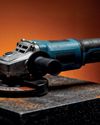
The Home Handyman
ANGLE GRINDERS — MASTERING THIS VERSATILE TOOL
When it comes to versatile tools in a DIYer's arsenal, few can match the power and practicality of the angle grinder.
2 mins
Jul/Aug'25

The Home Handyman
KITCHEN CARE – MAINTENANCE TIPS FOR KEY AREAS
The kitchen is the heart of the home where meals are made, memories are shared, and chaos sometimes reigns. But like any hardworking space, your kitchen needs regular maintenance to keep it functional, safe, and looking great.
2 mins
Jul/Aug'25

The Home Handyman
Separating Fact from Fiction
Maintaining your home can be a daunting task, especially with the plethora of DIY tips and tricks floating around the internet.
2 mins
Jul/Aug'25
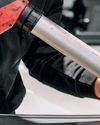
The Home Handyman
SEALANTS SIMPLIFIED: WHAT TO USE AND WHERE
Whether you’re tackling a weekend DIY fix, remodelling your home, or involved in large-scale construction, sealants are a silent hero that play a vital role in creating watertight, airtight, and secure finishes.
3 mins
Jul/Aug'25

The Home Handyman
COMMON FRIDGE/FREEZER FAULTS
Your fridge freezer is one of the hardest-working appliances in your home, so when it stops performing as it should, it can cause major inconvenience. The good news? Not every fault means an expensive call-out or a trip to the shops for a new one. In many cases, you can fix the issue yourself with a little know-how and a few basic tools.
3 mins
Jul/Aug'25
Translate
Change font size

